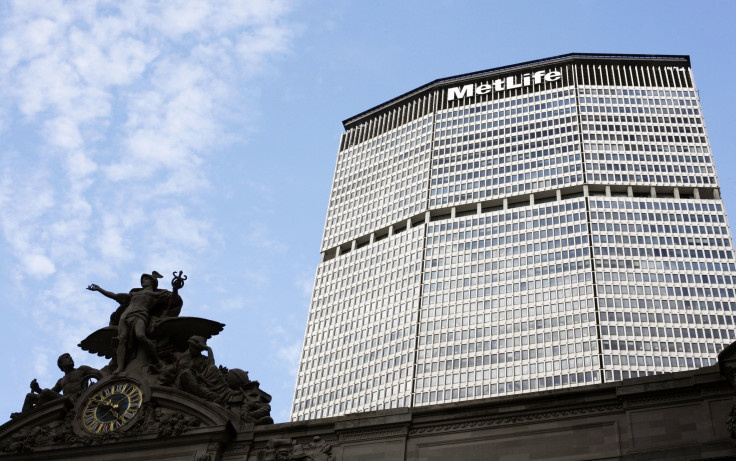Big Bank Breakups: Who Needs Bernie Sanders When You’ve Got Dodd-Frank?

Calls to “break up the banks” have burst back into the political conversation, thanks in part to Democratic primary candidate Bernie Sanders. But the Vermont senator isn’t the only source of pressure on Wall Street. With regulatory costs from financial reforms rising and revenues faltering, major financial institutions stand to see more questions from shareholders over their size and complexity.
That possibility loomed larger this week after insurance company MetLife announced it would break into multiple parts, citing a challenging “regulatory environment.” MetLife is large enough to be deemed by regulators a Systemically Important Financial Institution, or Sifi, subjecting it to increased supervision.
With another Sifi buckling under post-crisis regulations, analysts are watching whether the largest banks could face similar pressures to break up in order to avoid the added costs that come with being seen as too big to fail.
“Banks aren’t going to escape the scrutiny of regulators, but they could alleviate some of the pressure” by splitting off some divisions, said Mike Mayo, a bank analyst at CLSA. “Metlife moves it more front-and-center.”
Though major Wall Street lenders have so far shouldered growing regulatory burdens without having to seriously grapple with breaking up, an increasing number of financial institutions in their size bracket have felt the pressure.
GE Capital, General Electric’s finance arm, has slowly unwound itself over the past year in order to ditch its status as a Sifi. Meanwhile, activist investors have sought to shake up auto lender Ally Financial and insurance behemoth AIG, the latter fending off entreaties from heavy-hitting financiers Carl Icahn and John Paulson.
The nation’s top lenders haven’t been immune to shareholder activism, either. Veteran investor Nelson Peltz and his firm Trian Fund Management have scrapped with State Street and Bank of New York Mellon, in the latter case winning a board seat — a first for an activist investor at a Sifi bank.
Those banks — both systemically important institutions — are a far cry from the JPMorgans and Citigroups of the world, which Mayo said benefit from staying power built on “economies of clout.”
But recent market declines have further burdened big lenders. Banks including Goldman Sachs, Morgan Stanley and Bank of America have seen their shares fall below their tangible book value — that is, for each bank, the whole is valued at less than the sum of its parts. That gives additional ammunition to activists who would like to see banks slim down.
Unlike the ideological argument voiced by Sanders, this conversation centers around profits. Mayo has argued for years that the size and complexity of JPMorgan Chase and Bank of America — the two largest American banks — weigh on returns. The 2010 Dodd-Frank Act subjected banks holding more than $50 billion in assets to costly additional capital cushion requirements, among other regulatory hassles.
Revenues at the country’s five largest banks have been sliding for years amid the new rules and lackluster trading returns. “Why shouldn’t banks consider unleashing trapped value through sales, spin-offs or other actions?” Mayo said, floating the possibility of JPMorgan shedding its asset management arm or Citigroup selling off its Mexican franchise.
Both JPMorgan and Bank of America have batted away shareholder proposals filed by advocacy group Public Citizen to study breaking up. In a rebuttal to the proposal, Bank of America wrote that it had "significantly streamlined and simplified its organization," in part by shedding assets not central to its core banking operations. The $73 billion in assets the bank sold off amounts to 3.4 percent of its current net assets.
Investors rewarded MetLife for its shakeup announcement, lifting its stock price after years of trading below financial crisis highs. Shares of MetLife opened for trading Wednesday at more than 6 percent above Tuesday’s close, before sliding with the rest of the market.
Investors are hopeful that regulatory relief could be around the corner for the insurer. “We believe regulators see this move as proof positive that the Sifi designation process for nonbanks is working as intended,” wrote Guggenheim Partners analyst Jaret Seiberg in a note Wednesday, predicting that MetLife would eventually be removed from the list of systemically risky financial institutions.
Seiberg also noted the changing political landscape as a potential factor in the split. “It comes as presidential candidates are increasingly attacking ‘Wall Street,’ which has come to be defined as big banks, big insurers and big broker-dealers,” Seiberg wrote.
“To us, it would not be surprising if MetLife officials concluded that the policy environment is only going to get worse for Sifi institutions regardless of who wins the White House.”
© Copyright IBTimes 2025. All rights reserved.






















